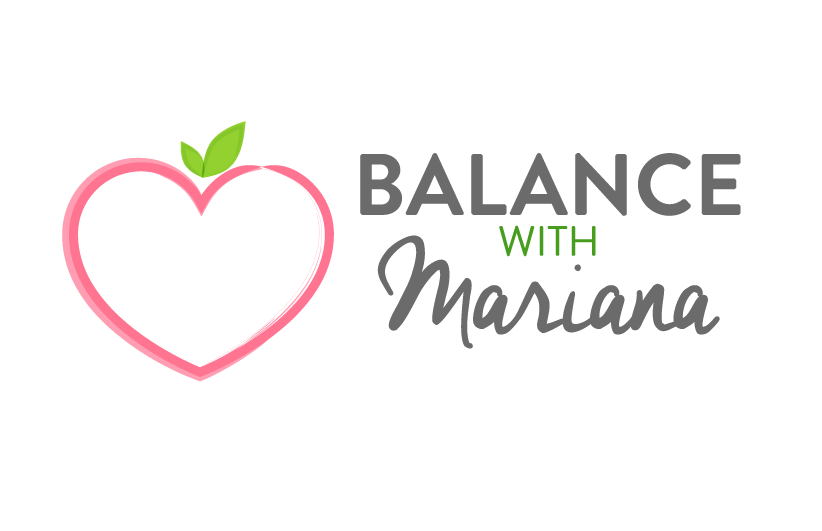Finding healthy and easy-to-prepare lunches for the week is a challenge for just about everyone. Unfortunately, we're often pressed for time, so we end up eating out. But as you may know, eating out is never as healthy as making your own meal, and not to mention expensive (especially if it’s healthy organic). But I have found one simple and customizeable lunch option that I LOVE, that is healthy yet filling enough to keep you energized throughout the afternoon, and is easy to prepare ahead and even take with you to work. It’s the fabulous MACRO BOWL.
Macro bowls are the definition of BALANCED meals. They’re called macro bowls because they include all major macro-nutrients: carbs, protein and fat. They usually consist of a base of whole grains, cooked and/or raw veggies, a protein of your choice and a healthy fat. The best thing is that you can really be creative with them and design to your liking.
There are so many varieties, but I’ll run you through the basic steps so that you can start making your favorite version.
1. Base.
Choose a whole grain / starch as your base. Options include: whole grains (like brown rice), seed-like-grains (quinoa, millet, amaranth), noodles (buckwheat, kelp, rice, quinoa, black bean or mung-bean noodles). Your base should make up about ¼ of your bowl.
Healthy tips:
- Keep it naturally gluten-free, your options are still numerous! (all the ones I list above are GF).
- When cooking your base, make sure to cook a large batch and save the extras for other meals.
- If you’d like to keep it lighter one day, skip the grains and go straight to step 2.
2. Vegetables
First choose some raw or sautéed leafy greens. Options include: spinach, kale, chard, cabbage, arugula, spring mix, mixed lettuces. Leafy greens are just so good for you, so I always like to include them, no matter what.
Then choose some cooked vegetables (roasted or sautéed). Options include: zucchini, yellow squash, green beans/hericot verts, broccoli, cauliflower, bell peppers, brussels sprouts, beets, fennel, leeks, butternut squash, sweet potatoes, carrots, mushrooms, etc.
The veggies (leafy greens + other veggies) should make up about ½ your plate.
Healthy tips:
- If you’re skipping grains, you can use cooked sweet veggies, ex. mashed butternut squash or sweet potatoes (keeping it to 1/4 of your plate) and then still make your leafy greens/other veggies as ½ of your bowl.
- If using raw greens you may want to keep them separate and add them at the end so they don’t wilt (especially if you’re taking to work and will be heating up the rest of your bowl).
3. Protein.
For the remaining ¼ of your bowl, choose a protein. Your options are again abundant, but please keep it healthy. Any small portion of lean animal protein works, including wild fish/seafood, chicken, turkey, even beef and lamb. If you’re keeping it vegetarian, you can do eggs, soy (organic tempeh, tofu, or edamame), or any variety of beans, like chickpeas, lentils, adzuki beans, black beans or mung beans.
Healthy tips:
- If using soy, always choose organic. Soy is usually genetically modified, so the best way to ensure its non-GMO is buying organic soy.
- If using eggs, opt for organic eggs from free-range chicken.
- If using animal protein, stick to free-range poultry, grass-fed red meat and wild fish. Avoid processed meats and very fatty cuts of meat.
- If you’re skipping grains, you can increase your protein portion to 1/3 of your bowl, but not more – otherwise it can make your meal too heavy and harder-to-digest.
4. Healthy fat / Additions.
Give your bowl some delicious flavor by adding a homemade dressing, nuts, seeds, or other (healthy) fats/condiments. Some of my favorites include: sliced avocado, sliced olives, lemon and olive oil dressing, tahini dressing, hummus, roasted sunflower seeds or pumpkin seeds, toasted sesame seeds, dried seaweed, and of course, fresh herbs.
Healthy tips:
- Always make your own dressings and mix it up. Apart from olive oil – try flax, hemp, avocado, sunflower seed, or walnut oil. Same goes with your vinegar (if using); apart from balsamic vinegar, try apple cider vinegar, umeboshi, lemon or lime.
- Condiment with additional herbs and spices. I love to add some fresh chopped cilantro or parsley to almost any bowl.
- Don’t go overboard on the additions – they’re meant to be toppings for added flavor and nutrition, but not ¼ of your bowl.
And there you have it! It's so simple, and NOTE, if you cook your "basics" in large batches, you can quickly put together different bowl varieties for the entire work week, with minimal extra effort.
Here are 3 of my favorite combos:
1. Chickpea bowl & Brown rice bowl
Base: brown rice (aprox ¼ cup)
Veggies: sautéed broccoli + cauliflower (aprox 3/4 cup) + sautéed spinach (aprox ½ cup)
Protein: chickpeas (aprox ¼ cup)
Extras: 1 tbsp. pumpkin seeds, and a drizzle of homemade tahini dressing: tahini, water, olive oil, minced garlic, lemon, sea salt, cayenne pepper, turmeric
2. Shrimp & Quinoa bowl:
Base: quinoa (aprox ¼ cup)
Veggies: mixed baby greens (aprox ½ cup) + raw shredded veggie slaw: cabbage + carrots + beets (approx. ½ cup)
Protein: grilled organic shrimp (aprox ¼ cup)
Extras: a few slices avocado, chopped cilantro, and a drizzle of homemade ACV dressing: olive oil, ACV (apple cider vinegar), sea salt and raw honey
3. Tempeh & Sweet Potato bowl:
Base: quinoa (approx ¼ cup)
Veggies: sautéed kale (approx 3/4 cup) + baked sweet potatoes (approx. 1/4 cup)
Protein: grilled tempeh (approx ¼ cup)
Extras: spicy toasted sunflower seeds, and a drizzle of homemade pumpkin & hemp seed pesto
Try one of my recipes this week, or give a shot at making your own version, and take it with you to work!
Love and Easy Lunches,
Mariana
photo credit: the colorful kitchen


